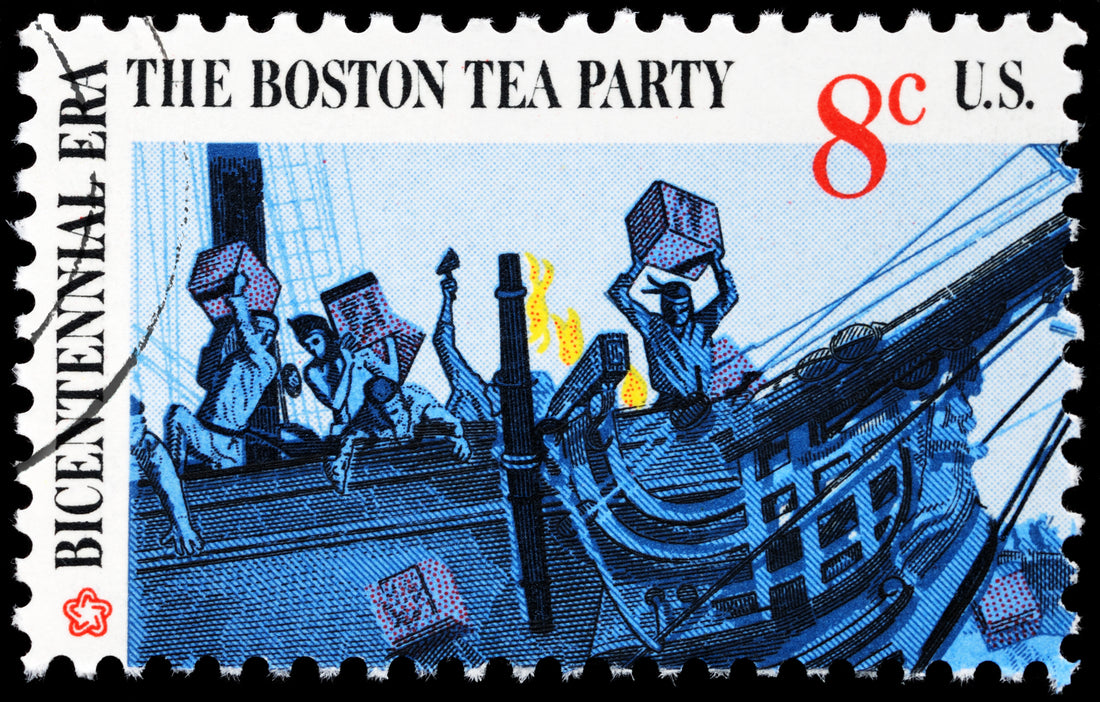
The Boston Tea Party: A 250-Year Retrospective on Tea and History
Michele LillieAs we reflect on 250 years since the iconic Boston Tea Party, it's fascinating to dive into the history, politics, and, of course, the tea that was part of this pivotal moment. The Boston Tea Party wasn't just a political protest; it was a defining episode that linked the world of tea with the birth of a nation. Let's set sail into the history books and explore the teas that went overboard on that fateful night of December 16, 1773.
A Revolutionary Brew: The Boston Tea Party Unfolded

It was a cold evening in Boston when a group of American colonists, disguised as Mohawk Indians, boarded three British ships: the Dartmouth, the Eleanor, and the Beaver. Their mission? To protest unfair taxation and assert their right to self-governance. They did so by throwing 340 chests of tea into Boston Harbor.
In today's currency, that's an estimated $1.7 million worth of tea! But what types of tea were they, and do we still enjoy them today?
The Teas of Rebellion: What Was Thrown Overboard?
The chests contained five types of tea:
Bohea (Wuyi) Black TeaThe tea that was contained in 240 chests originated from the Wuyi Mountains in Fujian, China; the term Bohea derives from this same area. It became a slang word for tea beginning in the late 17th century.
Bohea was the most consumed tea of the time. Then, it was most often referred to as a lesser-quality tea. It was generally dried over charcoal fires before being shipped to London. According to tea expert Bruce Richardson, this tea was so common that the phrase “share a cup of Bohea” was used rather than a cup of tea.
Congou Black Tea
Another 15 chests contained Chinese Congou black tea, also from the Wuyi Mountains. It was of the finest quality and only affordable to the wealthy. Some describe it as a superior form of Bohea.
The word "Congou" comes from the Chinese 'gongfu,' or ‘kong fu’ meaning 'skill' or 'craftsmanship,' which speaks volumes about the care put into producing this tea.
Souchong Black Tea
Ten chests of this classic black tea from the Wuyi mountains were given over to the waters. The original term meant “small leaf variety” and referred to the family of tea plants native to this area.
The colonists would have been used to a smoky aroma from this tea due to the drying process. Today, these teas, known as Lapsang Souchong, are intentionally dried over pine wood fires to give them their distinctive smoky aroma and flavor.
Singlo Green Tea
This green tea, grown in the Singlo Mountains in the Anhui province of China, was found in 60 chests. It was a type of tea that was picked later in the season, when the leaves were larger.
It was not widely known in the colonies as it tended to spoil sooner than other teas. It was only included in the ill-fated shipment because the East India Company had quite a bit of stock that needed to be liquidated before it became undrinkable. They hoped that Americans would develop a taste for it.
Hyson Green Tea
Although there is some debate on the amount of this tea that was dumped, the usual recognized number is 15 chests.
It hails from the Anhui and Zhejiang provinces of China. It is picked in the spring and was known as the “before the rains” tea. The leaves were rolled into tiny pearls, such as gunpowder, but in smaller dimensions.
It was the finest grade of green tea available to the colonists and was a favorite of George Washington and Thomas Jefferson.
A Taste of History: Do We Still Have These Teas Today?
Absolutely! Modern-day tea enthusiasts can still enjoy variations of these historical blends:
Wuyi TeaCongou Tea
Green Teas
Concluding Sips
As we commemorate the 250th anniversary of the Boston Tea Party, we're not just celebrating an act of defiance; we're acknowledging a complex brew of history, politics, and culture. And in doing so, we're also appreciating the enduring and evolving world of tea, which has its own stories to tell, one cup at a time. So, the next time you sip on one of these teas, remember, you're not just tasting tea; you're savoring a sip of history.
Happy steeping on this historic milestone!
Drop into English Tealeaves for a taste of history.

